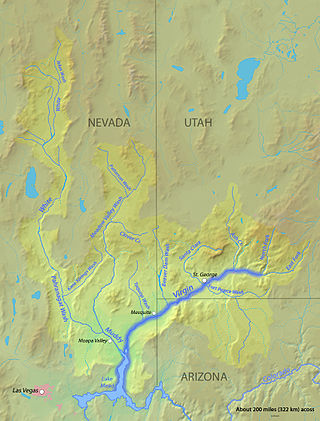Albany, derived from the Gaelic for Scotland, most commonly refers to:

Sangamon County is located in the center of the U.S. state of Illinois. According to the 2010 census, it had a population of 197,465. Its county seat and largest city is Springfield, the state capital.
Bunker Hill, Bunkers Hill or Bunker's Hill may refer to:

Southern Illinois, also known as Little Egypt, is the southern third of Illinois, principally along and south of Interstate 64. Although part of a Midwestern state, this region is aligned in culture more with that of the Upland South than the Midwest. Part of downstate Illinois, it is bordered by the two most voluminous rivers in the United States: the Mississippi below its connecting Missouri River to the west and the Ohio River to the east and south with the Wabash as tributary.

Utah's Dixie is the nickname for the populated, lower-elevation area of south-central Washington County in the southwestern portion of the U.S. state of Utah. Its winter climate is very mild when compared to the rest of Utah, and typical of the Mojave Desert, in which it lies.
Illinois is in the midwestern United States. Surrounding states are Wisconsin to the north, Iowa and Missouri to the west, Kentucky to the east and south, and Indiana to the east. Illinois also borders Michigan, but only via a northeastern water boundary in Lake Michigan. Nearly the entire western boundary of Illinois is the Mississippi River, except for a few areas where the river has changed course. Illinois' southeastern and southern boundary is along the Wabash River and the Ohio River, whereas its northern boundary and much of its eastern boundary are straight survey lines. Illinois has a maximum north–south distance of 390 miles (630 km) and 210 miles (340 km) east-west. Its total area is 57,918 square miles (150,010 km2).
Cotton is a soft, staple fiber that can be spun and woven into a textile of the same name.
New City is an unincorporated community in Cotton Hill Township, Sangamon County, Illinois, United States, in the rural center of the state. It is part of the Springfield, Illinois Metropolitan Statistical Area.

Kwale County is a county in the former Coast Province of Kenya. Its capital is Kwale, although Ukunda is the largest town.

The 11th congressional district of Illinois is represented by Democrat Bill Foster.

Cotton Hill Township is located in Sangamon County, Illinois. As of the 2010 census, its population was 902 and it contained 389 housing units. The township is the home of Hunter Lake, a proposed 3,010-acre (12.2 km2) reservoir.
Cotton House may refer to:
Vernon Hill is an American businessman and bank executive.
Cotton Township may refer to the following townships in the United States:

Cotton Hill, also known as Crow's Mill or Cotton Hill Post Office, was a small unincorporated community on the banks of Sugar Creek in Ball Township, Sangamon County, Illinois, about eight miles south of downtown Springfield. It stood for slightly over a century, from the 1820s until it was razed in the 1930s to make way for Lake Springfield. In 1900 the community had an estimated population of 150, a post office and a train station on the Illinois Central. Just before its demolition in the 1930s the community had a store, a schoolhouse, a blacksmith's shop, and a gas station on Route 66.
This page is based on this
Wikipedia article Text is available under the
CC BY-SA 4.0 license; additional terms may apply.
Images, videos and audio are available under their respective licenses.






